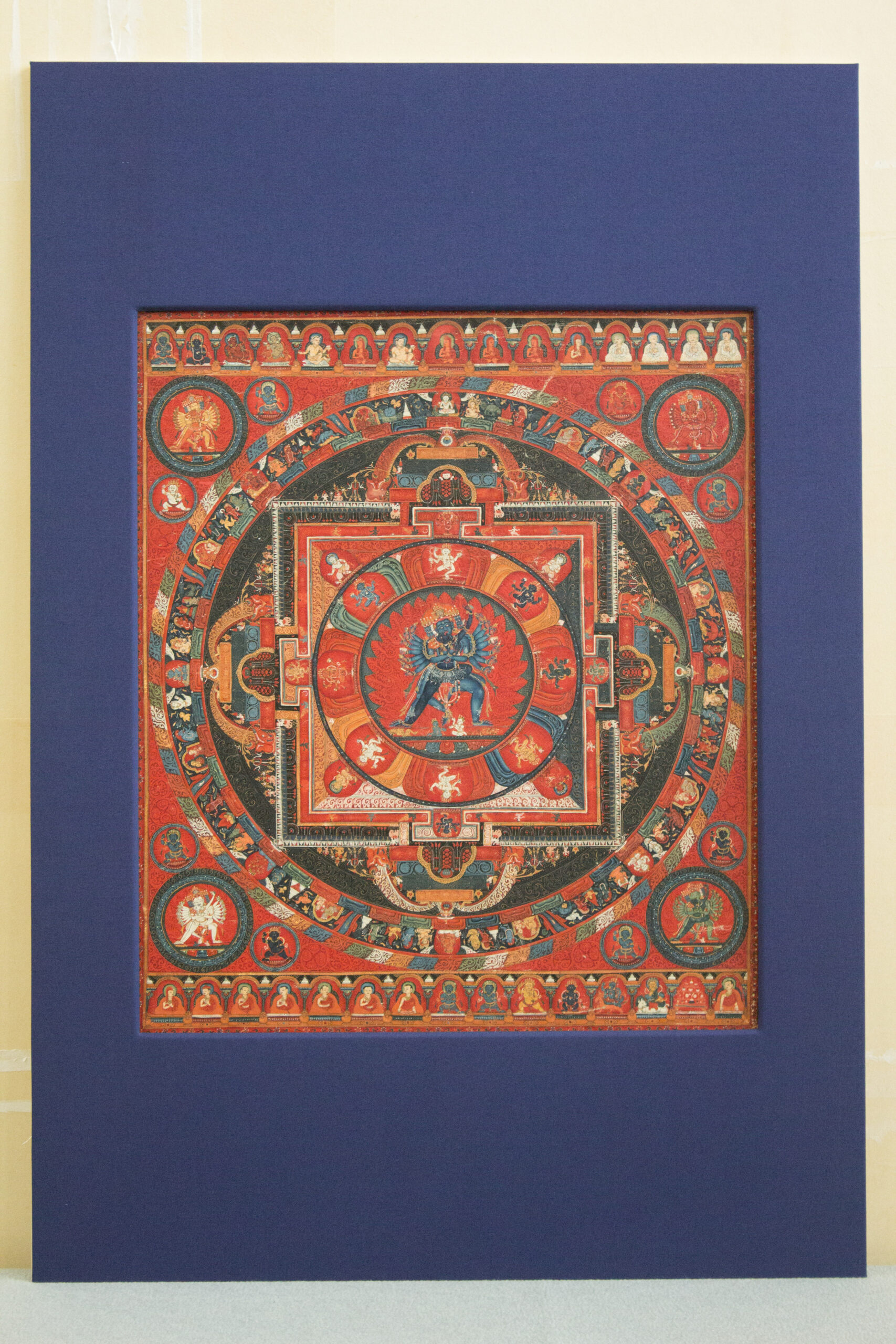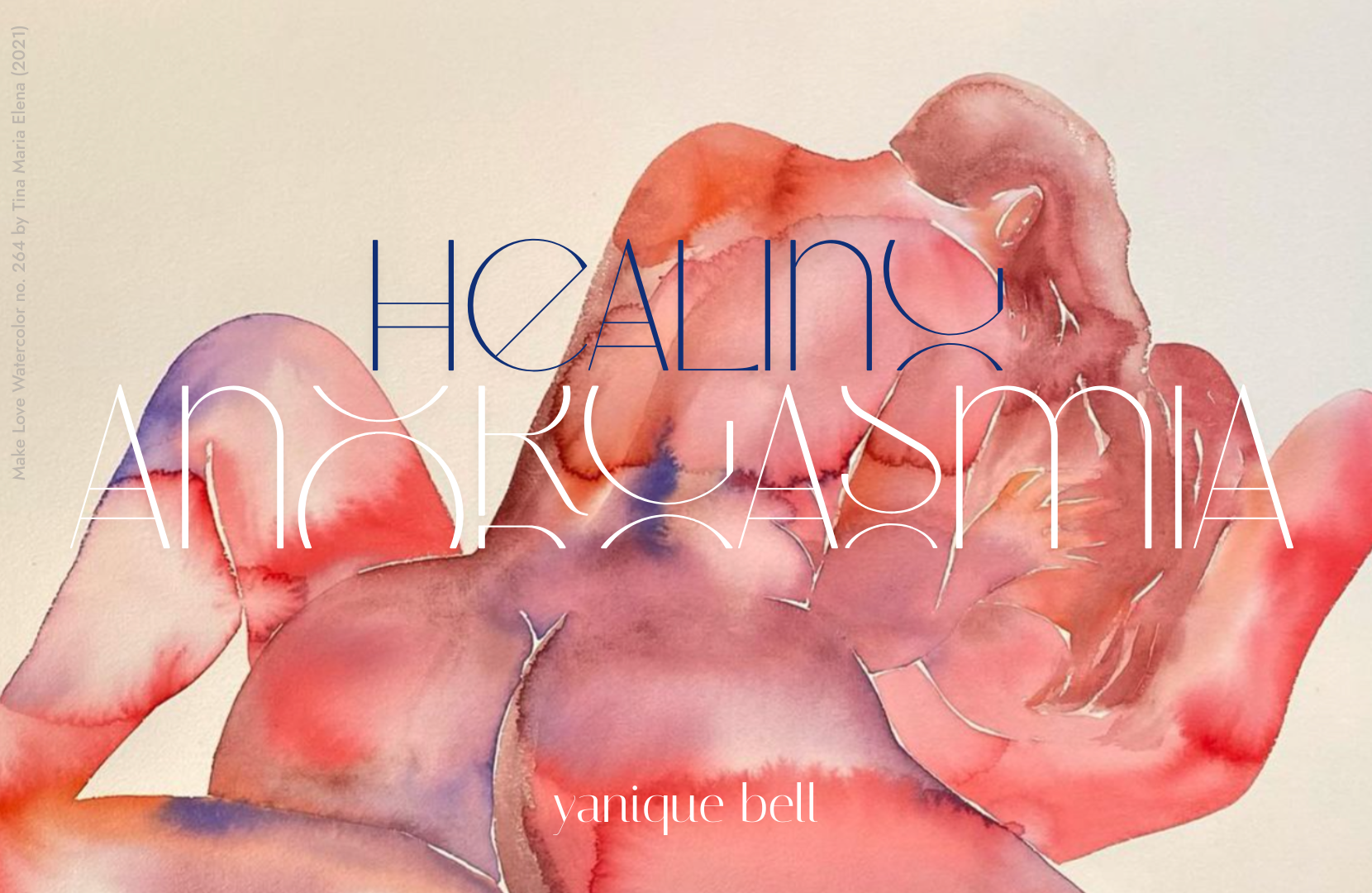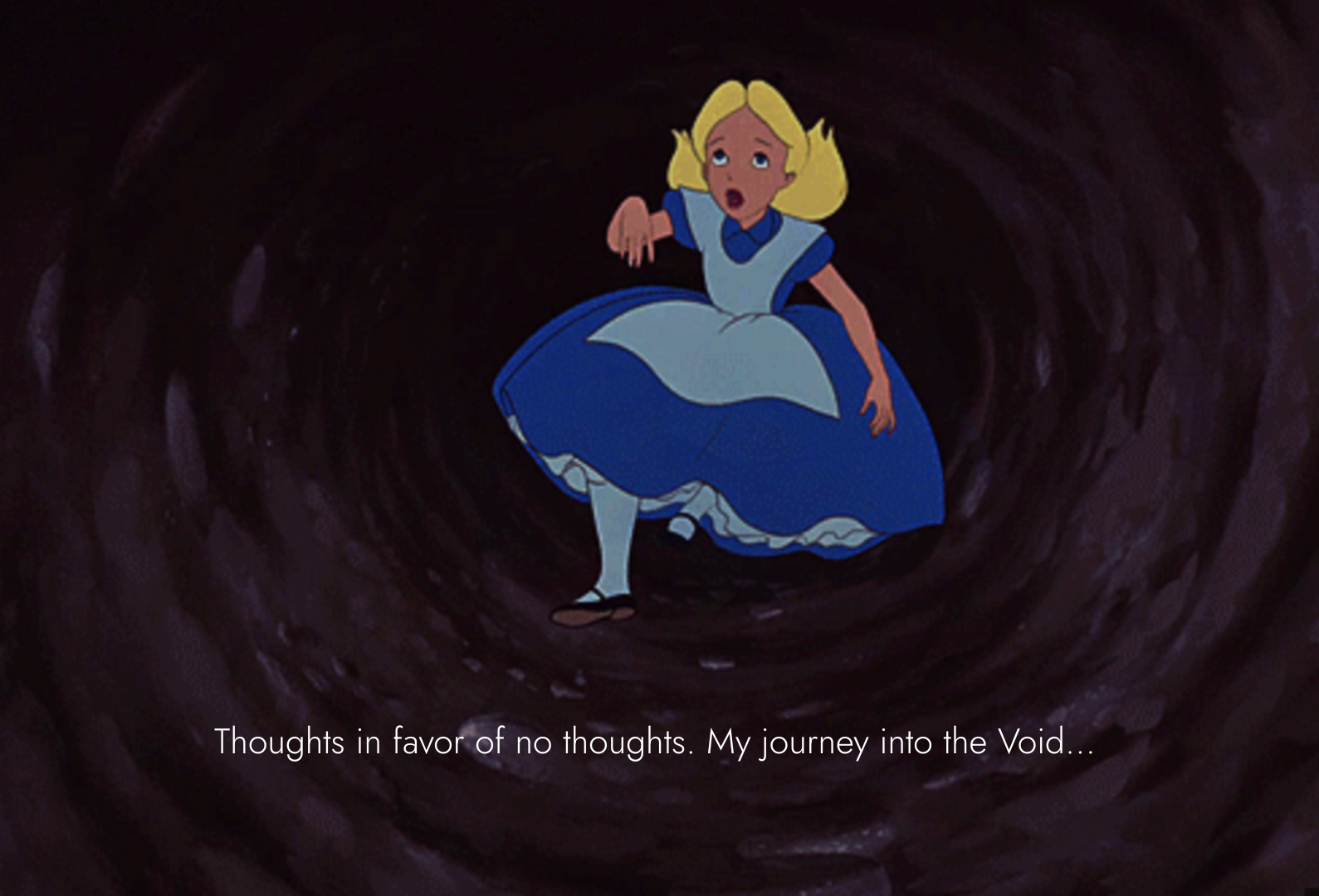
As an Intimacy Coach and Spiritual Guide who specializes in Tantra and conscious sexuality, hands down, this is the most common question I get asked: “What is Tantra?” So, in this post, I’ll be sharing what Tantra is, its origin, and what it means to practice Tantra as a non-Hindu person.
Although commonly confused as a religion, Tantra is not quite a religion, but a mode of practice that can be found in numerous religions and spiritual traditions. Tantra refers to the series of scriptures that began to emerge in 6th century India, specifically in Kashmir which is located in the northern most part of India. Over the following centuries, Tantra eventually spread throughout the Indian subcontinent and South Asia.

What is a “Tantra”?
“Tantra” is a Sanskrit word which is used to refer to a “theory,” “doctrine,” or “book.” It is homogenous to the “books” of the Bible, in that it refers to a scriptural text that is divinely revealed and written on its own scroll or leaf. The word “tantra” is also used to refer to the specific system of practice that is revealed in the scripture. In other words, one can read a tantra (scripture) and also practice tantra (practice). Tantra refers both to the source material and the practice.
There are many tantras (scriptural texts) – hundreds of major texts and thousands of minor ones.
Note: Words Lost in Translation
You may have heard Western spiritual teachers saying that the word tantra means “to weave” or “to loom.” This is often proceeded by a notion that Tantra exists to weave the divine masculine and divine feminine together. However, this use of the word “tantra” is akin to a homonym (similar to the words serial and cereal). These are two distinctly different uses of the word Tantra. The purpose of Classical Indian Tantra was not divine sexual union between masculine and feminine. I would argue this is an example of the Western Judeo-Christian perspective blurring the lens in which early Western practitioners and students viewed the Tantric practices. When we are faced with something new, we often want to place it in our mind’s existing categories, however Tantra goes beyond sexual union or Adam and Eve.
What is Tantra? – Etymology and Definition

Etymology
We can also gain a better understanding by what is revealed through Tantra by looking at the etymology of the word. “Tan” means “to propagate, elaborate on, expand on.” “Tra” means “to save, protect” and it also has the additional meaning of “a device.” So, a tantra is a device/mechanism for expansion. It is expanding wisdom that saves us from the cycle of suffering. To be precise, Tantra helps us to experience spiritual expansion and liberation.
Defining Tantra
Now, let’s take a look at attempts to define Tantra. This may seem like a simple task, but trust me it is not. I studied Religion at Princeton University and in the very first seminar for our major, we learned pretty quickly the pitfalls of trying to define the word “religion.” The very inability to define religion makes it difficult to study and distinguish from other fields. Indeed, the study of religion calls on the methodologies of other disciplines to formulate its ideas and give credibility to its conclusions. In some ways, as an independent area of study, Religion is one that is at ambiguous war with itself. But I digress. What I want you to know is that there is no unifying definition or set of characteristics that is shared by all religions. In the unacademic setting, we’d chuck it up to: “It’s one of those things where you just know it when you see it ;)”
Likewise, because there are so many tantras (both scriptures and lineages of practice) with their own unique emphasis on different elements and practices, there is likely no perfect definition of Tantra that will check all the boxes for everyone. Personally, I like this definition by Dualist Tantrik scholar and guru Rāma Kaṇṭha who lived around 950 -1000 CE:
“A Tantra is a divinely revealed body of teachings, explaining what is necessary and what is a hindrance in the practice of the worship of the Divine; and also describing the specialized initiation and purification ceremonies that are the necessary prerequisites of Tantrik practice. These teachings are given to those qualified to pursue both the higher and lower aims of human existence.”
Rāma Kaṇṭha
Rāma Kaṇṭha defines that Tantra consists of four main components:
- Initiation
- Interaction with the Divine (“Ritual Worship”)
- The Pursuit of Spiritual Liberation (mukti in Sanskrit) AND Worldly Enjoyment and Pleasure (bhukti)
- Teachings from the Divinely Revealed Scriptures
#1 – Initiation
Let’s look at the first component: initiation. Initiation ceremonies were essential because they helped practitioners move beyond karmic barriers and the ego mind, preparing them to experience spiritual liberation within their lifetime (the predominant goal of Tantra). These initiation processes also gave you access to the tantra (scripture) and the secret practices contained within the tantra.
While you will not be practicing Classical Tantra within PUSSY ACADEMY, you will still undergo an initiation ceremony to energetically activate and amplify your path to spiritual liberation, such that you feel that you are being called forward by an invisible thread to your awakening.
#2 – Interaction with the Divine
The second main component is a way of interacting with the Divine. In Classical Indian Tantra, ritual worship of a form of the Divine was a key element to a daily Tantric practice. In this context, worship refers to the act of evoking the power of a Deity and interacting with it or embodying/becoming the Deity through a meditative ritual. The purpose of these rituals were to realize a core truth: that there is no separation between the you and the Deity.
You’ll find an example of this in my Sensual Refresher Kit – See the Sex Goddess Activation Practice.
However, not all Tantric practices emphasized ritual. Some replaced ritual with the cultivation of direct intuitive awareness. Personally, I see the need for both ritual and the cultivation of direct intuitive awareness. In PUSSY ACADEMY, we begin with an emphasis on rituals as a route to activating your intuitive capabilities and accessing the primal brain. After a few months of ritual practice, you’ll experience a spiritual climax: the conscious awakening of your Deeper Self. From there, we focus on stabilizing this direct path to divine wisdom so that you can stay turned on and tapped into your magic consistently throughout your day. It is one of the most orgasmic shifts in consciousness you’ll ever experience. Beyond this stage, our PUSSY ACADEMY Live rituals are then used to nourish the soul, support the connection to the Deeper Self, and further your expansion.
If you’re keen on learning more about PUSSY ACADEMY, explore the program details here and join the next free community gathering and live practice.
#3 – The Pursuit of Spiritual Liberation and Pleasure
Next, Rāma Kaṇṭha’s definition of Tantra references the “higher” and “lower” goals of Tantra. The higher goal is the state of spiritual freedom and bliss (known as mukti in Sanskrit). At this stage, one has been liberated from the cycle of suffering and experiences bliss as a lived experience. Meanwhile, the lower goal is the achievement of worldly enjoyment and prosperity (known as bhukti in Sanskrit). At this stage, we are fully embodied and receptive to immense pleasure and abundance. While mukti takes precedence over bhukti, both are taken seriously within Tantra and seen as legitimate spiritual pursuits. The honoring of both the spiritual and worldly aims is a characteristic that sets Tantra apart from many of the religions in India and the world.
This is indeed my favorite aspect of Tantra and one that I deeply craved coming from a Christian background. To honor the body deeply and see its pleasures as an expression of the divine, rather than something to be tamed, controlled, and disembodied in pursuit of the higher realms, is innately healing.
#4 – Teachings from the Divinely Revealed Scriptures
Finally, a Tantric practice incorporates wisdom deemed from the scripture(s). Now, the Tantric texts are largely only available as unpublished ancient manuscripts (writings on really old paper mediums), making them largely inaccessible. Tantric philosophy that is discussed today is derived from commentaries on the scriptures and other inspired work by Tantric masters. Some of these commentaries so beautifully illuminated wisdom that went beyond even that of the scriptures that they came to be treated as scriptures themselves.
Other Components You May Find in Classical Tantra
Beyond Rāma Kaṇṭha’s definition, Western scholars have attempted to define Tantra by key features shared between lineages. Here are other components you may find in Tantra:
- Yoga, especially kundalini yoga
- Mantras
- Yantras and mandalas
- Gurus
- Divine Polarity (God/Goddess)
- Esotericism/Secret Knowledge
- Spiritual Physiology (i.e. the subtle body or energy body)
- Sexual yoga and importance of the feminine
According to scholar Christopher D. Wallis who specializes in Kashmir Shaivism (Tantra that originated in Kashmir, India), there are seven universal features of Tantra that you will find in just about every Tantric tradition: yogic meditation, mantras, mandalas, guru, initiation, ritual worship, and “deity yoga.” The aspect of the Divine that is explored in deity yoga would set the tone for how the other six universal features were expressed.
As a Neo-Tantra practitioner and teacher, you will not find all of these features in my practice and within PUSSY ACADEMY. I certainly am not your guru and I ask that you utilize tools like mantras, yantras, mandalas, and the invocation of deities with discretion and utmost respect. My goal is to help you discover your own soul wisdom and weave in the spiritual knowledge you have gained from your own spiritual tradition or ancestral birthright. We will discuss practicing Tantra as someone who has a non-Hindu background in just a bit.
Is Healing The New “Purification” Process?
Before we move on, I want to address the concept of purification. Rāma Kaṇṭha’s definition mentions the need for “purification ceremonies.” The concept of purification is innately dualistic — it stems from the idea that all of life can be categorized into that which is good (pure) and bad (impure).
As a nondual practitioner, I hold the belief that there is no “good” or “bad.” All aspects of the Self and nature are divinely well. It is harder for shame to thrive in a nondual worldview, because we see All as an expression of the Divine. From here, we seek to be master navigators of all energies and deliberate creators of our reality.
However, I personally believe there is a “purifying” of energy that occurs as we practice Tantra. This purification arises through the act of psychological integration.
Since Tantra has a dual goal of achieving both spiritual liberation and worldly enjoyment, the practitioner is invited to re-embody their being rather than disembody to experience their divine self. This act of re-embodiment requires psychological integration — the process by which the psyche becomes whole and unified, as opposed to fragmented and disintegrated as it does when we experience trauma or reject any aspect of the Self, creating a “shadow self.”
As we heal, we feel more “pure” — not in the sense of being clean, but in the sense of being whole and true. When we heal, we feel purely us, fully ourselves. We are no longer denying, shaming, or rejecting any aspect of the Self. We meet ourselves with compassion and our original soul essence begins to emerge.
Mode of Practice vs. Religious Practice
As Tantra has permeated various religious traditions including Brahmanism (aka Vedism), Shaivism, Shāktism, Vaiṣhṇavism, Buddhism, Jainism, and Indian Islam, as scholar Christopher D. Wallis proposes, one way to view Tantra is not as a religion per se, but a mode of practice or mode of viewing reality. Tantra is commonly practiced in the esoteric and mystical dimensions of a religion. As a mode of practicing one’s spirituality, Tantra is spirituality embodied. Unlike a religion that is primarily concerned with contemplations of the divine, dogma, laws, power and control through systems, Classical Tantra is primarily concerned with practice and personal enlightenment.
Tantra: A Home for the Mystics of Any Society
In this way, those who find home in the Tantric teachings are often mystics of their society or religious tradition. Perhaps more than most, we are able to sense our connection to the divine and the impermeability of the soul. Many of us are drawn forward on our paths not from a desire to awaken, but a desire for a peace that only comes from integrating the ego with the Deeper Self. This quest is at the core of PUSSY ACADEMY. Through ritual and practice you will awaken to the Deeper Self and develop the skill of thought-less knowing, a kind of sensing and vibration-based communication that goes beyond the mind.
Practicing Tantra Does Not Require Converting to Hinduism
As I mentioned, Tantra is best considered a mode of practice, rather than a religion. As Wallis notes in Tantra Illuminated, “the practice of Tantrik yoga involves transcending one’s ordinary identity, and therefore does not require initiates to belong to any specific caste, class, gender, or ethnic group. To be more precise, Tantrik practice involves the creation (or realization) of an esoteric divine identity within your earlier, culturally-specific identity.”
Tantra awakens what I refer to as the Deeper Self, the eternal part of you that is connected to the Divine/Source. This aspect of the Self has been given many different names and identifiers throughout human history, including the Buddha-nature, the inner being, our true Being, Christ within, and pure awareness.
What we consider modern Hinduism is akin to Judaism – it refers to both a cultural identity as well as a religious one. Generally, like Judaism, one is born into Hinduism, not converted.
As a non-Hindu person, does not require a a conversion to Hinduism. Your Tantric practice will invite you to go beyond your current identity to realize the Deeper Self, an experience that transforms and deepens any preexisting religious or spiritual practice you uphold.
In addition, please know that Western teachers, like myself, are more likely than not more accurately described as “Neo-Tantric teachers” not Classical Indian Tantra teachers. The practices you will come across will be greatly influenced by Western ideals, the spiritual needs of Western society, and the spiritual depth of your teacher or guide. (Likewise, Tantra that blossomed in other religions and societies like Buddhist Tantra have a different flavor compared to Classical Indian Tantra.) In some ways, I find that this is similar to what you may have encountered in India c. the 1000s, when Tantra was peaking in popularity, where there was a conglomerate of gurus teaching in small groups, each with it’s own distinct flavor. As Tantra is a mode of practice that opens us to the esoteric, everyone brings something unique to their teaching. And similar to Indian Tantra at its peak, the merit of the practice is based on the results students were able to get through a specific guru’s teachings. Since the goal is spiritual liberation and pleasure, students were not intellectually weighing the teachings, but the results of the practice. The goal was not to intellectually understand the Divine, but to experience and embody the Divine within. A credible Tantric teacher is one that empowers you with the tools to access your own Deeper Self and achieve your true desires.
Tantra as you see it practiced in the West looks totally different than Tantra in the East. And this may not be a bad thing. Historically, Tantra has been a disruptor wherever it lands in the world. It often brings into focus an aspect of society that is most disembodied, disconnected, and disintegrated from the Whole. For the West, heavily influenced by Judeo-Christian messages of religious purity, the most disconnected and disintegrated aspect of society is often sexuality and the body on a whole.
Sex and the body are the aspects of Western society that are often controlled through shame, threats of violence, and oppression. If the goal of Tantra is spiritual liberation which requires psychological integration, it only makes sense that the expression of Tantra in the West has largely come in the form of sexual rituals. These sexual rituals are often effective at increasing the experience of pleasure, but it should be noted that not all Tantra taught in the West is equipped to achieve true spiritual liberation. Not all go connect the links between sexuality and deliberate creation to effectively create self-mastery within students.
As you can guess, I’ve designed PUSSY ACADEMY to not only effectively expand your orgasmic pleasure, but reconnect you to your Deeper Self so that you may experience true spiritual liberation and orgasmically manifest your desires.
So, for those seeking to practice Tantra, yes you can still remain a member of your religion of origin (i.e. a cultural Christian or Jew). However, expect the view of Tantra to stretch you beyond your religion’s teachings or take you deeper into the mysticism of your current religion. Expect your spiritual identity to shift.
Keep Learning
I hope that after reading this you’re now as excited about Tantra as I am! It truly is a rich and diverse tradition with that has influenced so many of the religions and spiritual practices we know today.
I’ll be sharing more on the history of Tantra and how to begin your Tantric practice in the upcoming weeks. To get notified of new blog posts, subscribe to the newsletter. If you’re ready to dive in now and don’t want to wait any longer, Get 10% off the Sensual Refresher Kit – use code PLAY at checkout to begin your Tantric and conscious sexuality practice.
I’m here to help wild-hearted women just like you recover their original soul essence, fall deeper in love, and experience their sacred sexuality ❤️ If you’ve got questions about the information shared in this post or about PUSSY ACADEMY, drop me a line and let’s chat!

Popular Posts
Did this post answer your question “what is Tantra”? Comment below and share any further questions you have about Tantra and how to start your Tantric practice.


Comment on This Post